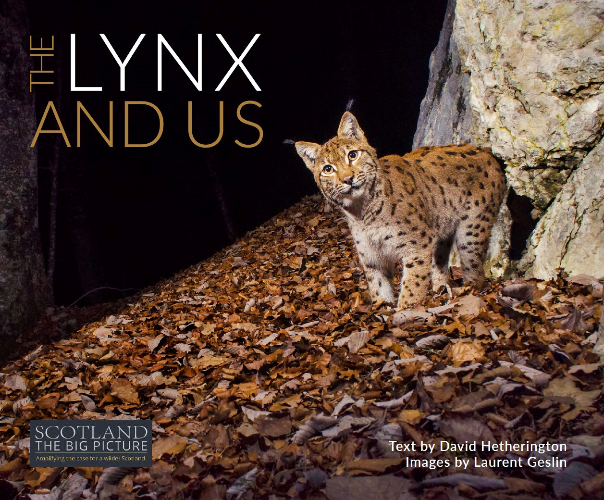
I expected this book to be a great visual treat considering the imprint from which it comes, and it is, but it is also a very interesting read.
You can’t go far wrong with photos of cats – the internet is full of them – but these images of wild European Lynx are superb. In some ways, the cover image is one of the less impressive of the images in this book, which might give you an indication of how high is the standard. And although there are lots of portraits of the species in question these are backed up by landscapes where Lynx live, prey species and a smattering of people too.
But the text is of very high quality too. I found myself reading the whole book in one sitting and only skipping a few pages in order to move on to the next exciting bit! The European Lynx is a big game hunter – a killer of Reindeer, Roe Deer (especially), Red Deer, Mouflon and sheep as well as a bunch of smaller prey species too. Their dietary tastes get these cats into trouble and illegal killing is still the main threat to the species, and a cause of failure of some reintroduction projects.
Learning of the way that Norway (not an EU member, of course) deals with Lynx predation on sheep and Reindeer was fascinating and rather alarming. I learned a lot. And learning of the relatively simple ways to limit impacts of Lynx on farming interests was a good lesson in conflict resolution. But, as we know, it’s very difficult to deal with a conflict if one side will readily scoop up the good will from the other and then go out and commit crimes against wildlife. But conflict there is, for sure. This book provides a very thought-provoking case study of wildlife-human conflicts.
And the images are superb!
The Lynx and Us by David Hetherington and Laurent Geslin is published by SCOTLAND: the Big Picture.
Remarkable Birds by Mark Avery is published by Thames and Hudson – for reviews see here.
Inglorious: conflict in the uplands by Mark Avery is published by Bloomsbury – for reviews see here.
[registration_form]
